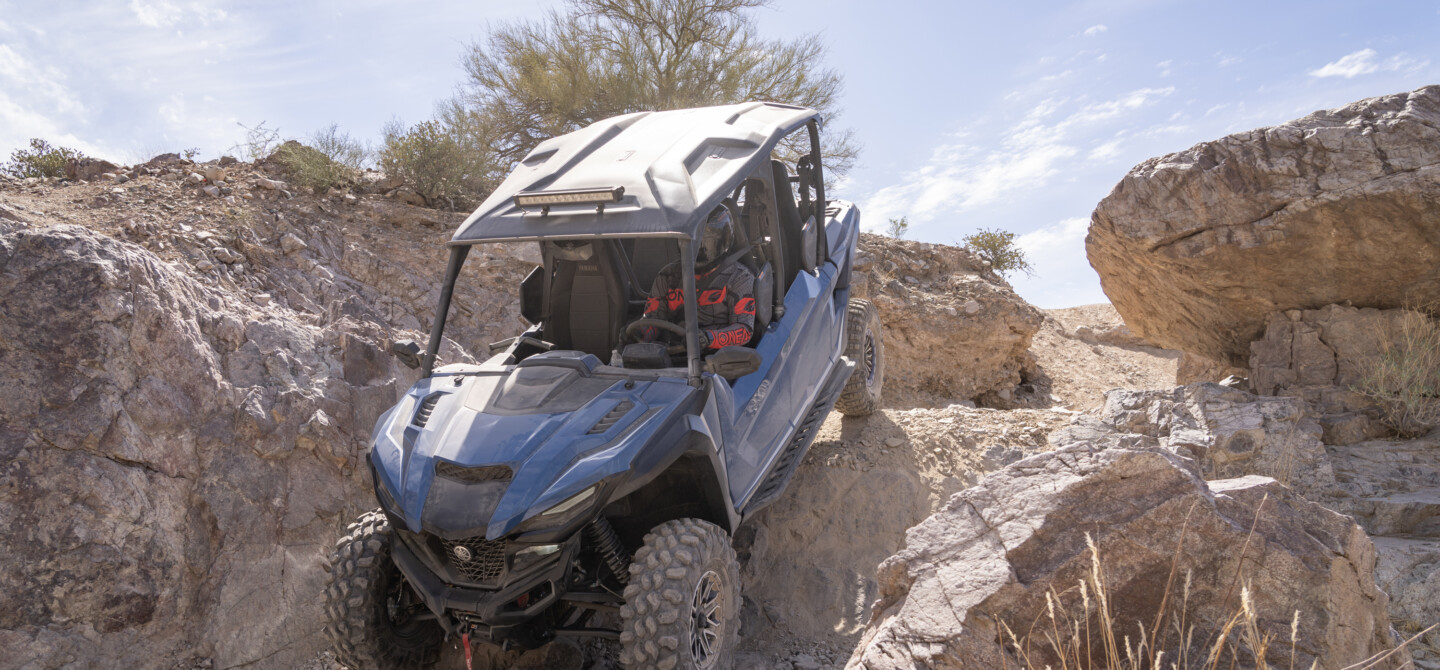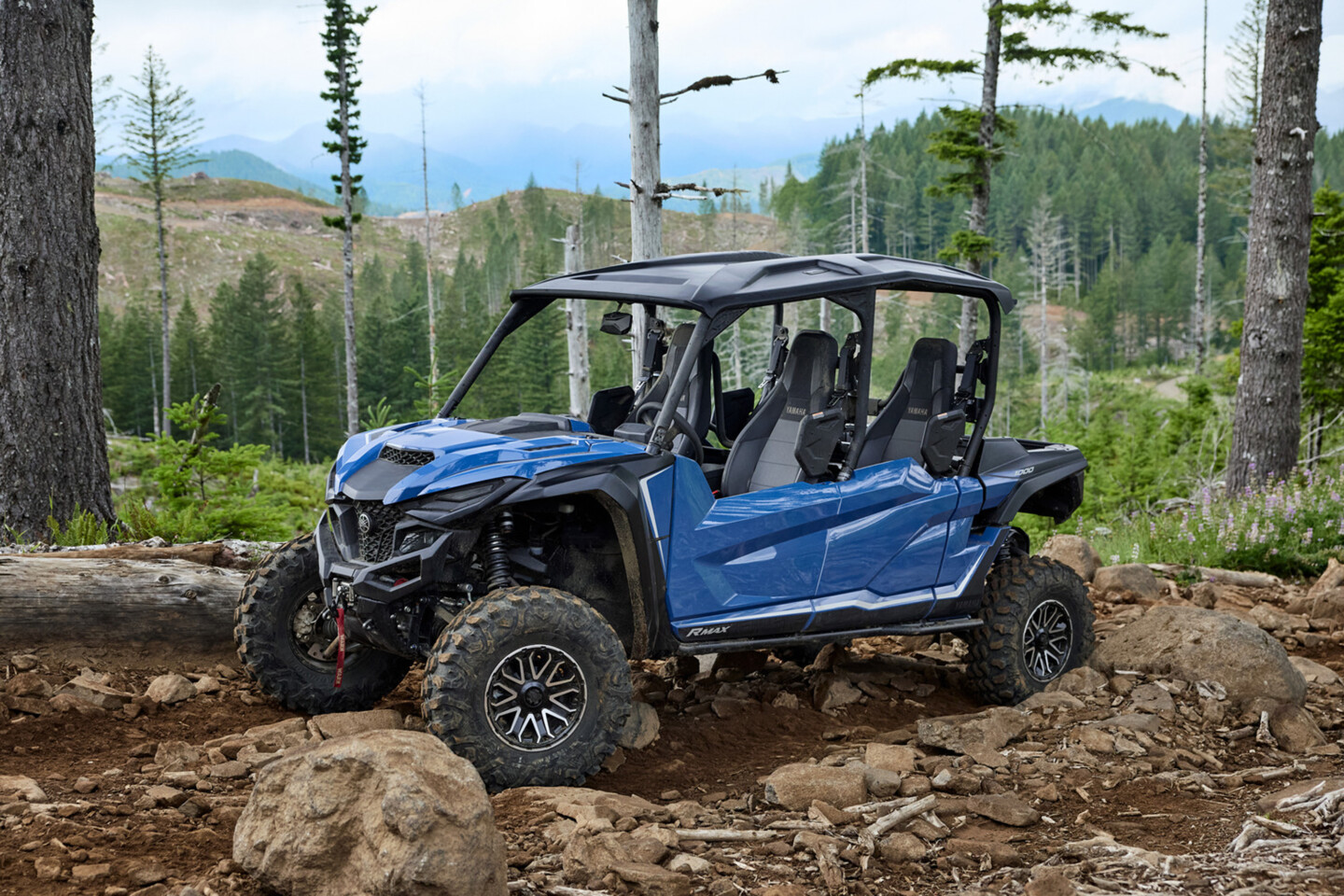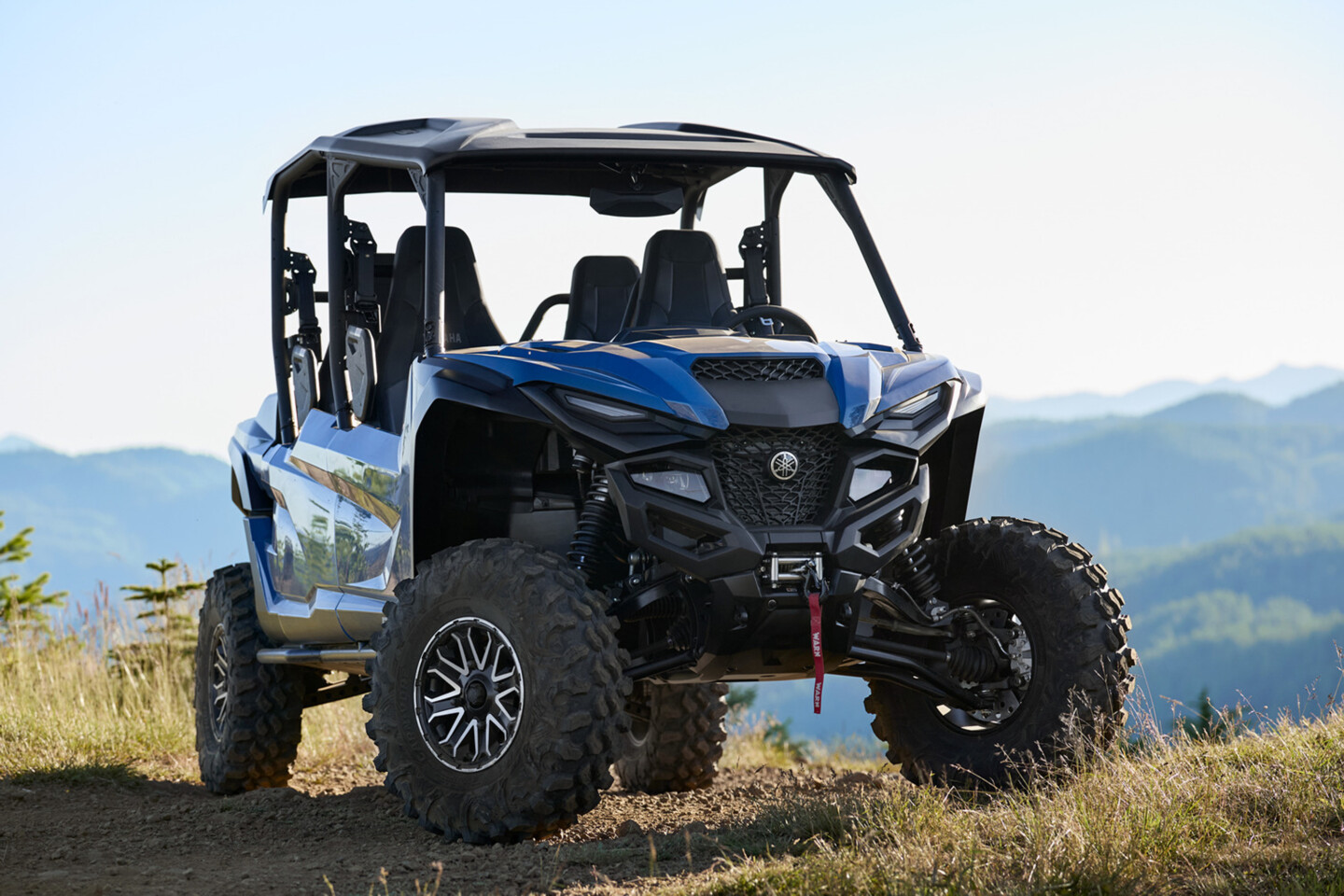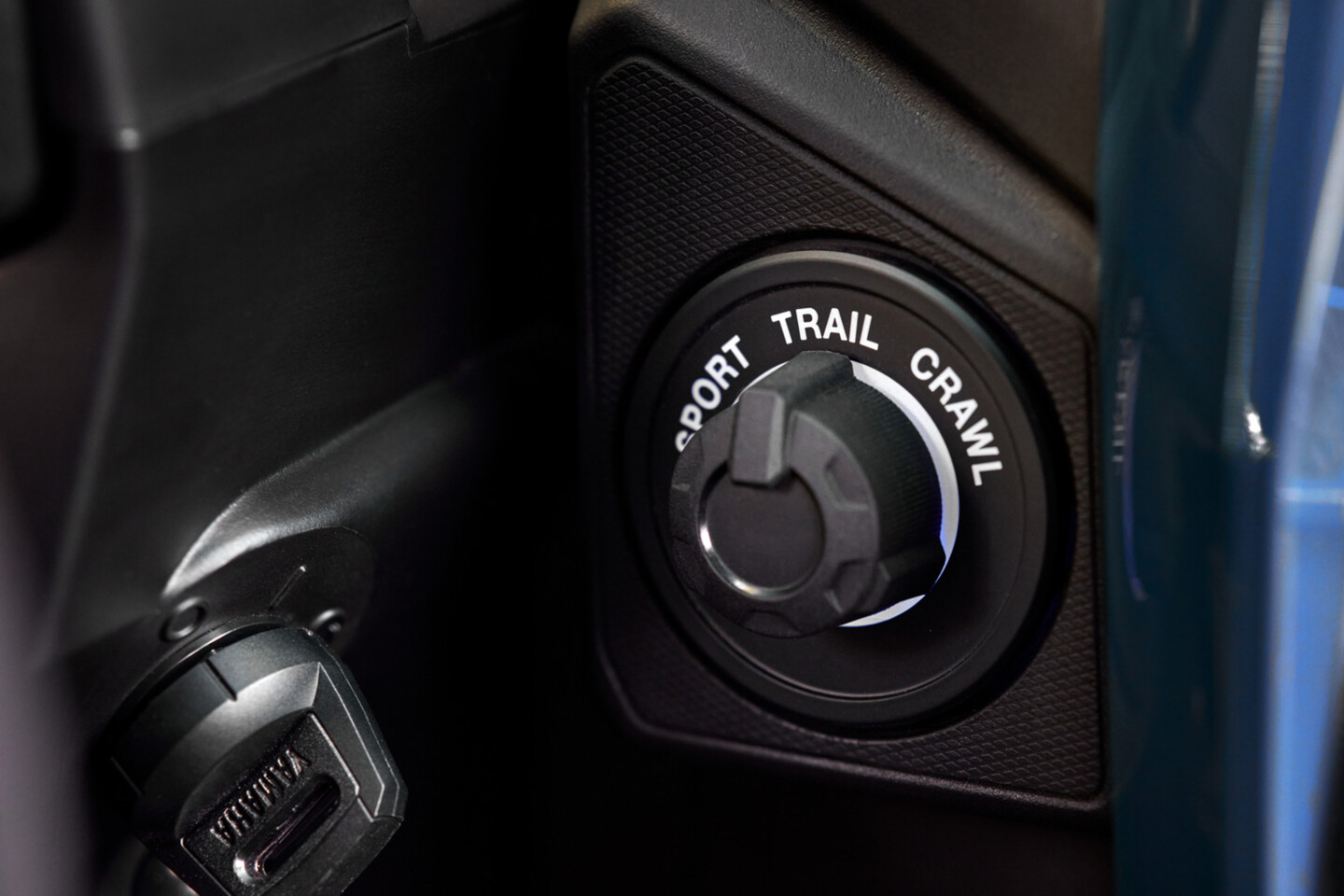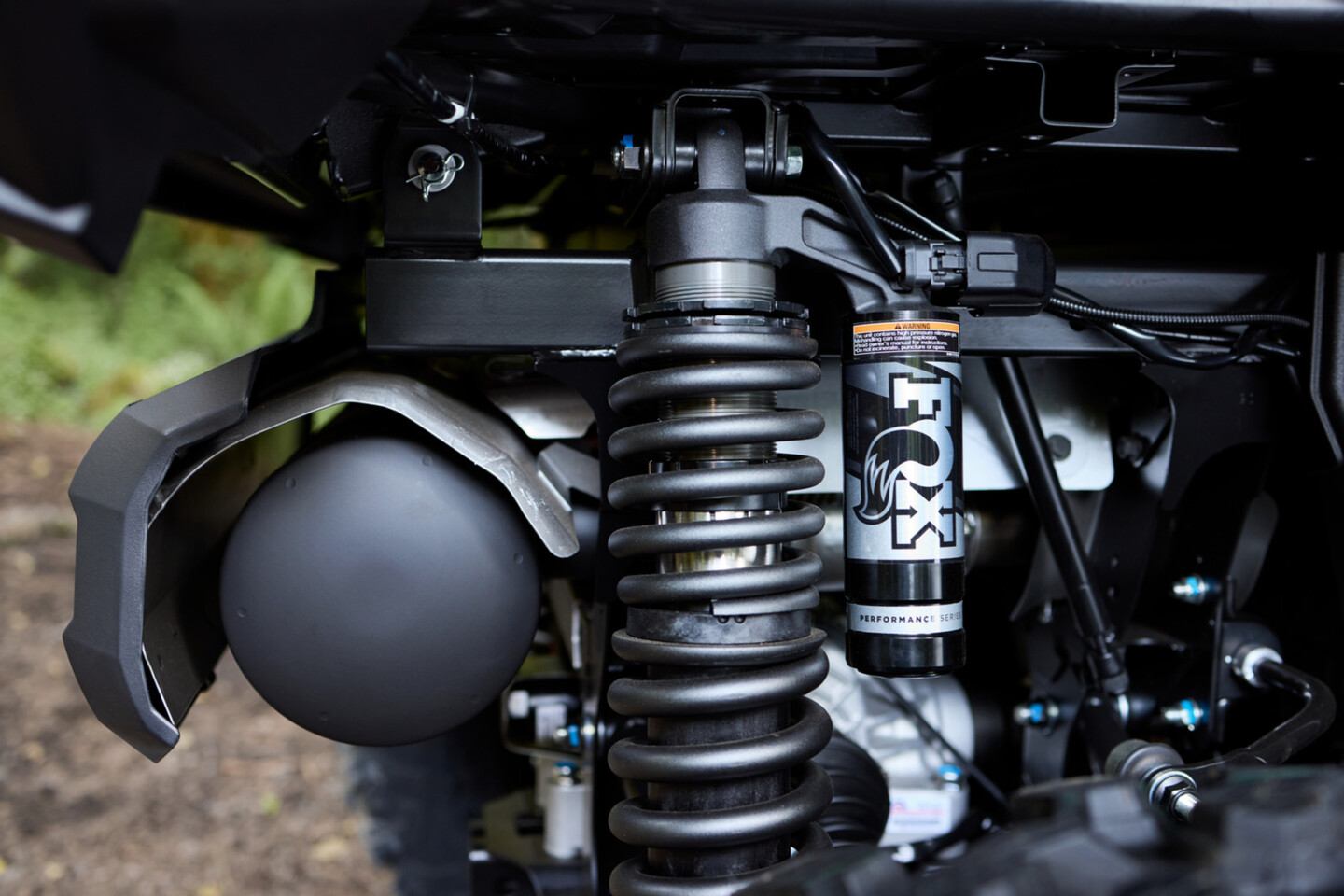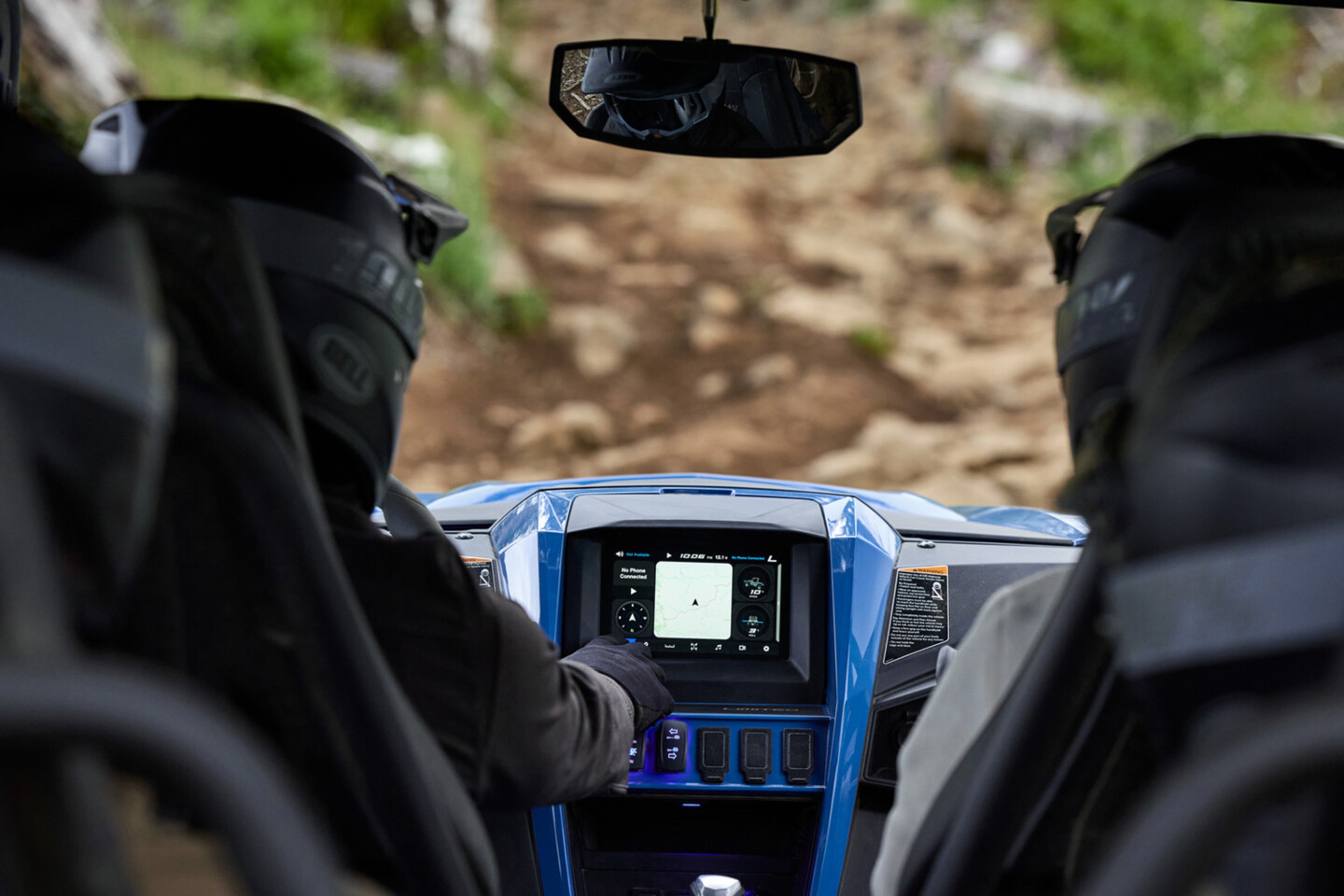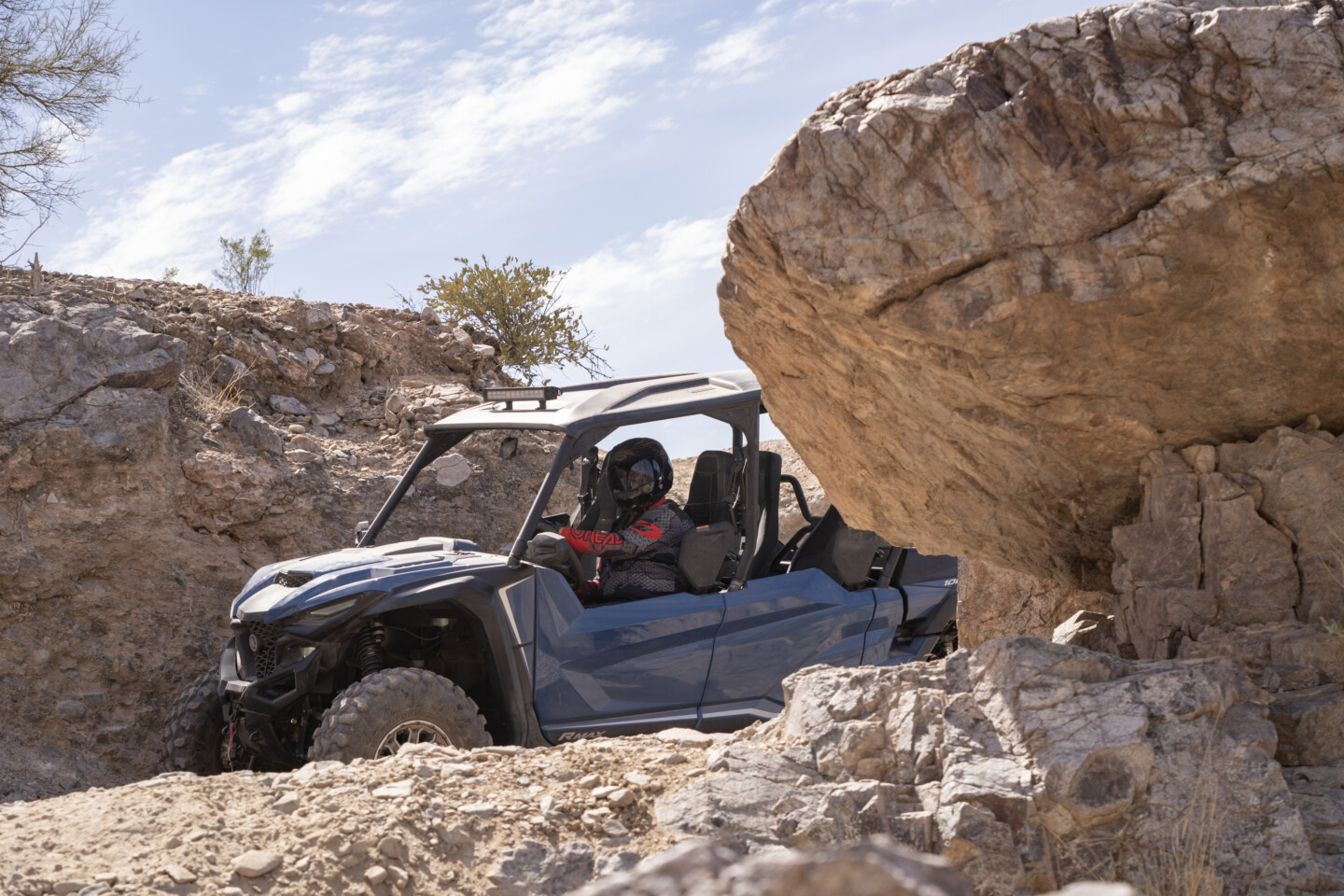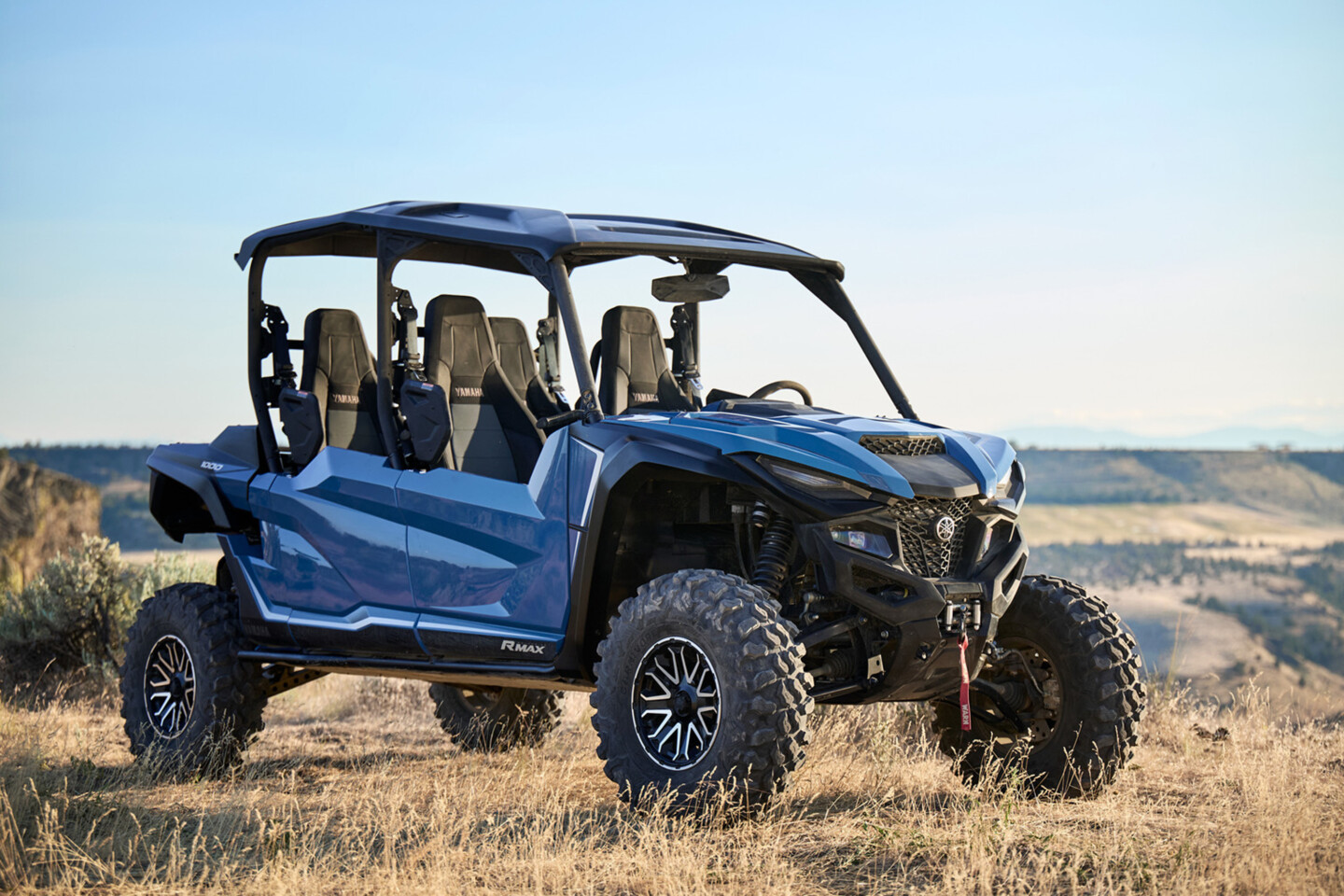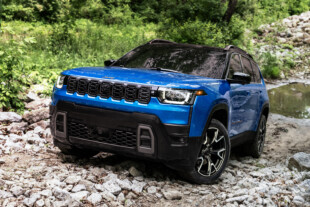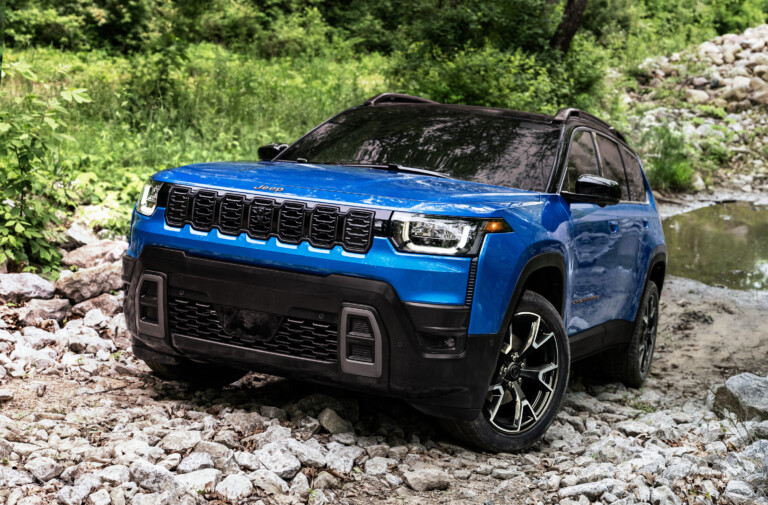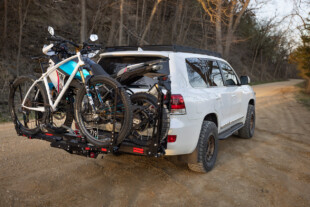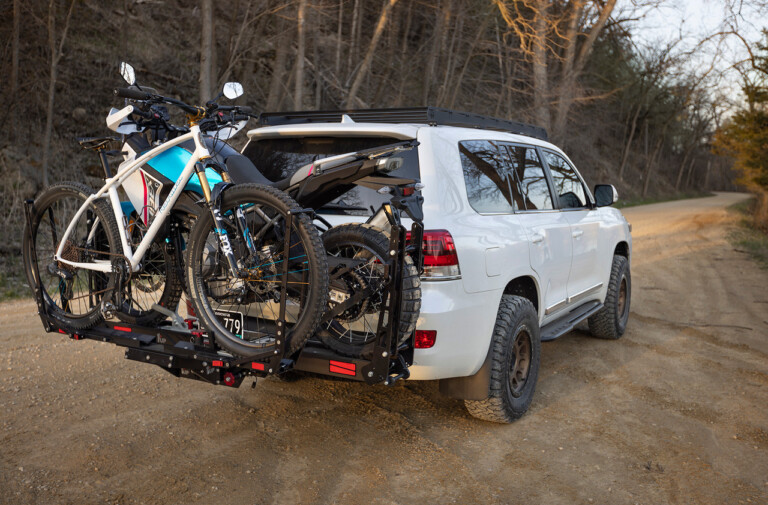Back in 2020, when everything in the world seemed to be going sideways, Yamaha introduced an all-new vehicle for the wildly popular recreational UTV class. The 2021 Yamaha Wolverine RMAX 1000 made its official debut in September of 2020. At launch, the Yamaha RMAX 1000 came in two flavors: a two-seat RMAX2 1000 and four-seat RMAX4 1000. However, unlike the rest of the sport side-by-side market, Yamaha chose to keep the four-seat model compact, giving it a wheelbase of just 90.2 inches. This was only marginally longer than the RMAX2’s 86.7-inch wheelbase.
Accomplishing this required some MacGyver work when it came to the rear seating position. The company’s ingenious solution included seats that both slide and fold. This function allowed for use of the full bed space when seating wasn’t needed and then room for four passengers when friends wanted to come along for the ride. Keeping the wheelbase short meant also meant that even with four seats the vehicle remained incredibly nimble. Unfortunately, there were a few downsides as well. Legroom wasn’t quite best-in-class for the rear seats, rear wheel travel suffered (13.3 inches vs 16.9 inches), and storage space was compromised with the seats in use.
Responding to industry demand, Yamaha has introduced a new four-seat RMAX4 1000 model for the 2025 model year. This new model is a true long-wheelbase four-door four-seat UTV. And it’s amazing.
2025 Yamaha RMAX4 vs. RMAX4 Compact: What’s In A Name?
The addition of the new long wheelbase four-seat RMAX 1000 to the lineup was exactly that, an addition. This meant, however, that Yamaha would now have two four-seat RMAX 1000 models for the 2025 model year and there would need to be some way to differential the two.
Read carefully because this is where things get confusing. Instead of opting for a fresh and new name, Yamaha chose to call the new model the RMAX4 1000. Yes, the same name that the former four-seat model had carried since launch. However, the older short wheelbase four-seat model is now called the RMAX4 1000 Compact. Clear as mud? We think so too.
What’s The Actual Difference Between The RMAX4 and RMAX4 Compact?
The differences between Yamaha’s pair of RMAX4s should go without saying. We’ll break it down anyway. Most noticeably, the RMAX4 is longer in both wheelbase and overall length. The RMAX4 Compact sports a 90.4-inch wheelbase while the RMAX4 checks in at 118.1 inches. Overall length for the Compact is 128.1 inches while the RMAX4 is a whopping 150.8 inches. The RMAX4 is also about ¾ of an inch wider and 1.5 inches taller.
Where the RMAX4 Compact sports 29-inch Maxxis Carnage tires, the RMAX4 comes fit with 30-inch Maxxis Carnivore rolling stock. This tire size difference gives the RMAX4 an extra half inch of ground clearance. Both side-by-sides offer 14.2 inches of front wheel travel, however, the RMAX4 boasts 16.9 inches of rear wheel travel to the compact’s 13.3 inches.
These dimensional differences result in RMAX4 having greater rear seat interior space and cargo space. The added length also improves high-speed straight-line handling. However, turning diameter and maneuverability are sacrificed slightly, as is breakover angle.
What Motivates The Yamaha RMAX4 1000?
Powering the full lineup of Yamaha RMAX 1000 side-by-sides is the company’s 999cc liquid cooled 4-stroke engine. The company doesn’t typically disclose power ratings; however, we know this engine makes about 108 hp. Backing the engine is the company’s Ultramatic CVT that utilizes a robust wet-clutch design and carries an industry-leading 10-year belt warranty.
Plush Long-Travel Suspension
Underpinning the Yamaha RMAX4 1000 is a premium long-travel suspension. The front suspension offers 14.2 inches of wheel travel while the rear has 16.9. Damping is handled by Fox 2.0-inch coilover shocks with XT-R models coming with the company’s manually adjustable QS3 units while the LE trim gets Fox’s iQS in-cab adjustable shocks. Both shocks dampen similarly with only the method of adjusting the settings changing. Yamaha says it has optimized the suspension geometry for maximum low-speed comfort and articulation while not sacrificing high-speed performance. Anti-sway bars are employed at both ends to help provide the most stable handling possible.
A Near Luxury Automotive Style Interior
The interior of the RMAX lineup is built around occupant comfort. Automotive-inspired soft touch points are found throughout the side-by-side, including around the knee areas, the center console lid, steering wheel, and passenger handhold. An open gate shifter design offers positive engagement with a light, natural effort.
Limited Edition models receive an all-new TFT digital instrument cluster, which not only enhances visibility over the older-style LCD meter but also offers a more ergonomic button layout along with a modern and fully customizable display. Also included with RMAX4 LE models is an all-new Adventure Pro infotainment system. The 7-inch display is now fully integrated into the dash. It features a start-up video and mode selection animations along with a customizable home screen. GPS navigation files can be uploaded via a dash-mounted USB port. And phone notifications along with music selection can be handled by Bluetooth. An all-new MTX audio system is also available.
To Ride Is To Believe
To experience the new 2025 RMAX4 1000 Yamaha invited us out to for a lovely spring ride in central Arizona. The beauty of this part of the country is its diversity of terrain. On our 40-plus-mile ride we encountered wide open desert trails, plenty of whoops, deep sand washes, tight and twisty canyons, hill climbs, and rock crawls. A little something to challenge all the senses.
Jumping behind the wheel it became apparent almost immediately that unless you have a very specific need for the RMAX4 Compact, this was the machine to own. The added wheelbase is a blessing when it comes to high-speed performance, giving us an extra boost of stability and the confidence to push just a bit harder. The extra length also means that the RMAX4 is closer in size to the bulk of what people ride in the desert southwest, which allows the machine to better manage the spacing of whoops better. Combined with the increased rear wheel travel and the RMAX4 now stands out from the pack in desert riding where before it was merely adequate.
Naturally, tight trails become a bit more of a challenge to navigate. Thankfully, Yamaha kept the 64-inch track width the same so it’s not as cumbersome as the wider 72-inch vehicles. At times we found ourselves needing to pick lines with a bit more attention, but overall, there was very little added stress due to perceived maneuverability issues. When it came to rock crawling we found a bit of a mixed bag. The longer wheelbase helps with climbing, however, the decreased breakover angle meant we had to be more aware of what was under the belly.
During the ride we never found ourselves lacking for traction thanks to the Maxxis tires and Yamaha’s On-Command four-wheel drive system. The On-Command system allows for swapping between two and four-wheel drive on the fly along with engaging and disengaging the locking front differential while rolling. While we kept the RMAX4 in four-wheel high most of the ride, popping it into rear-wheel drive allowed for some fun tail steering on the twistier bits.
We also thoroughly enjoyed the new selectable electronic power steering modes and are always fans of Yamaha’s exclusive D-Mode drive modes. Our favorite combination proved to be low assist on the steering system and Trail mode from the D-Mode selector. That said, high assist with the Crawl drive mode came in clutch on the most technical sections.
Yamaha RMAX4 1000 Final Thoughts
Here’s the deal: We have loved the Yamaha RMAX 1000 lineup since the first time we drove one. The addition of the 2025 RMAX4 1000 to the lineup only increases that affection.
The 2025 RMAX4 1000 comes in two trims: XT-R and Limited. The XT-R trim starts at just $27,999 while the Limited starts at $29,199. Both are available at Yamaha dealers now.


